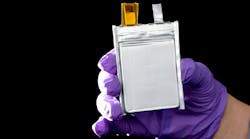General Motors Corp. president Mark Reuss in an interview revealed that the automaker will announce plans this week to build more electric battery plants in the U.S., to support its goal of ending production of gasoline-fueled cars by 2035. The executive did not elaborate on the number or locations for the new plants, nor the types or volumes of the batteries to be manufactured.
The new battery plants would be part of a "comprehensive and highly integrated plan" announced by GM CEO Mary Barra to increase electric vehicle and autonomous vehicle investments to $35 billion for the 2020-2025.
Currently two EV battery plants are under construction by Ultium Cells LLC – a joint-venture co-owned by GM and LG Energy Solution – at a cost of $2.3 billion each, in Lordstown, Ohio, and Spring Hill, Tenn. Those plants will produce the Ultium batteries based on the technology GM unveiled in 2020, as a low-cost power source for electric vehicles.
Separately, GM announced a Memorandum of Understanding with Wabtec Corp. to develop and commercialize applications of the Ultium technology and Hydrotec hydrogen-fuel cell technologies to power Wabtec locomotives.
Hydrotec is a hydrogen-fuel technology that GM projects as the basis for compact “power cubes” that may be used to fuel a range of applications, including locomotives. For example, GM is supplying Hydrotec fuel cells to Nikola Corp., a start-up that aims to produce “zero-emission” heavy-duty (Class 7/8) commercial vehicles.
Fuel Cell Systems Manufacturing LLC. a joint-venture of GM and Honda, is establishing a plant in Brownstown, Mich., that will produce the Hydrotec cells from the technology engineered by General Motors.
“Our FLXdrive locomotive, the world’s first 100% battery-powered locomotive, has proven its potential to slash carbon emissions by up to 30% when operating at 6 MWh. But we can’t stop there,” according to CEO and president Rafael Santana. “By working with GM on Ultium battery and Hydrotec hydrogen fuel cell technologies, we can accelerate the rail industry’s path to decarbonization and pathway to zero-emission locomotives by leveraging these two important propulsion technologies.”
Reuss said Wabtec’s selection of Ultium battery and Hydrotec hydrogen-fuel cell technologies “further validates our advanced technology and demonstrates its versatility.”






